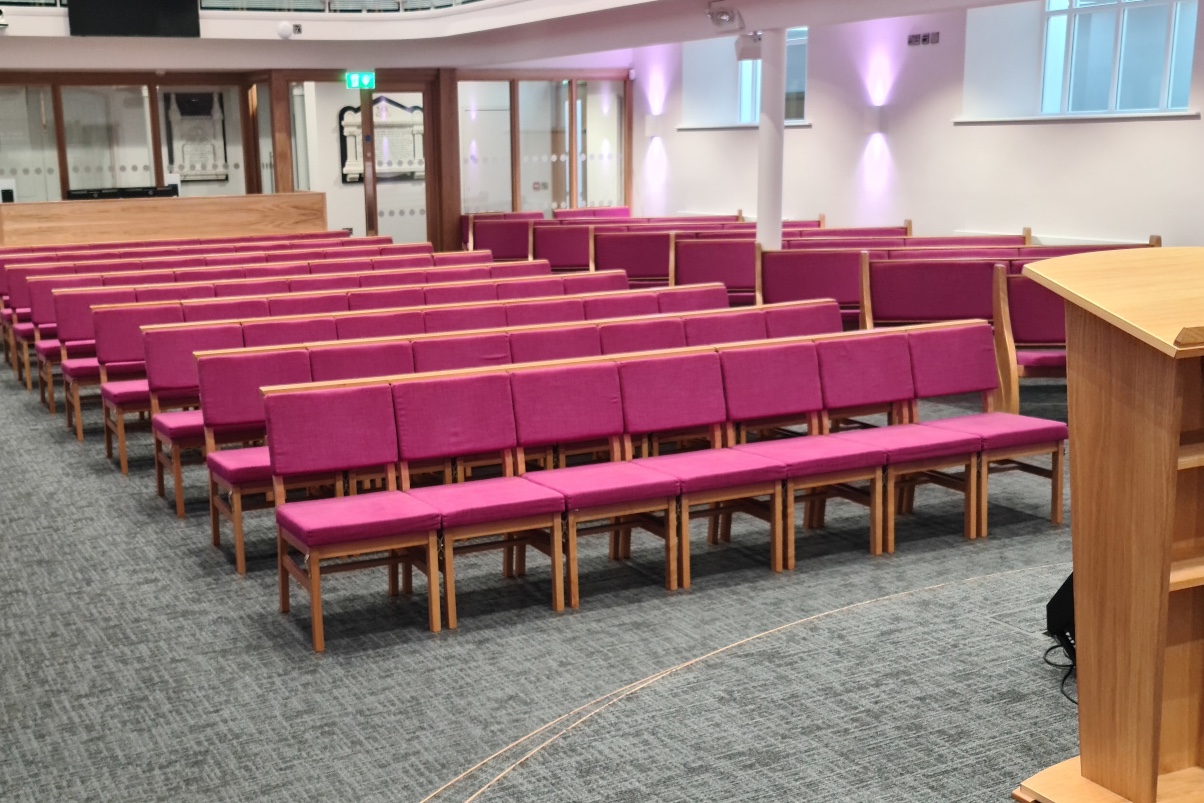Worship spaces are places where people come together to find solace, community, and connection. Whether in a church, synagogue, mosque, or temple, the design of the worship environment significantly impacts the overall experience. Among the key elements in these spaces is seating, which plays a critical role in comfort, aesthetics, and functionality.
Historical Context of Worship Seating
The history of worship seating is as diverse as the faiths and cultures that have shaped it. Early Christian churches, for instance, often lacked fixed seating, with congregants standing or sitting on the floor. As Christianity spread, pews became common, starting around the 13th century in Europe, evolving from simple benches to more elaborate and ornate structures.
In synagogues, seating arrangements have traditionally been flexible, accommodating different practices and community needs. For example, Sephardic synagogues often featured benches along the walls, while Ashkenazi synagogues adopted pews similar to those in churches. Islamic mosques typically use rugs or carpets instead of church chairs or benches, reflecting the practice of performing prayers while seated on the floor.
Design Considerations
Designing worship seating involves a delicate balance of several factors, including theological requirements, spatial constraints, and the comfort of the congregation. Here are key design considerations:
1. Theological and Liturgical Requirements
Different faith traditions have unique requirements for their worship spaces. For example, Catholic churches often need seating arrangements that allow for processions and clear views of the altar. Protestant churches may prioritize flexibility for varied worship styles, while mosques require open spaces to accommodate the physical movements of prayer.
2. Spatial Layout and Capacity
Maximizing the use of space without compromising comfort or accessibility is crucial. The layout should facilitate easy movement, clear sightlines, and, where applicable, acoustics that support congregational participation. Capacity needs vary, with some worship spaces accommodating a few dozen worshippers and others, like megachurches, needing seating for thousands.
3. Comfort and Ergonomics
Comfort is a key factor in worship seating, as services can last several hours. Ergonomic design ensures that seating supports proper posture and reduces fatigue. Padded seats, backrests, and armrests contribute to comfort, while spacing between seats ensures adequate legroom.
4. Accessibility
Inclusivity is paramount in worship spaces. Seating should accommodate people with disabilities, providing spaces for wheelchairs, easy-to-navigate aisles, and seats with armrests that assist with standing and sitting.
5. Aesthetics and Symbolism
The visual appeal and symbolic significance of seating contribute to the sacred atmosphere. Materials, colors, and design motifs should reflect the faith's traditions and enhance the overall worship experience.
Materials and Construction
The materials used in worship seating range from traditional wood to modern composites. Each material has its advantages and considerations:
1. Wood
Wood is a traditional choice for pews and benches, valued for its durability, natural beauty, and warmth. Hardwoods like oak, maple, and cherry are popular for their strength and grain patterns. Wood can be carved and stained to create intricate designs, adding to the aesthetic and symbolic value.
2. Metal
Metal seating, often used in contemporary worship spaces, offers strength and longevity. Metals like steel and aluminum are commonly used for their ability to support various seating designs, from sleek, minimalist chairs to more elaborate benches. Metal seating can also be powder-coated in different colors to match the interior decor.
3. Upholstery
Upholstered seating provides additional comfort, with options ranging from simple cushions to fully padded chairs. Fabric choices include durable textiles like polyester blends and luxurious options like velvet. Leather and vinyl are also popular for their ease of cleaning and longevity.
4. Plastic and Composites
Modern materials like high-density polyethylene (HDPE) and other composites are used for their versatility and cost-effectiveness. These materials can be molded into various shapes, are resistant to wear and tear, and come in a wide range of colors.
Emerging Trends in Worship Seating
As worship practices and architectural trends evolve, so too does worship seating. Here are some emerging trends:
1. Modular and Flexible Seating
Many modern worship spaces are designed for multifunctionality, hosting not only religious services but also community events, concerts, and educational programs. Modular seating allows for quick reconfiguration, supporting various activities and layouts.
2. Eco-Friendly and Sustainable Materials
Sustainability is increasingly important in building design, including worship spaces. Eco-friendly materials, such as bamboo and recycled plastics, are being used to create seating that minimizes environmental impact. Additionally, sustainably sourced wood and low-VOC (volatile organic compound) finishes contribute to healthier indoor environments.
3. Technology Integration
Technology integration in worship seating is becoming more common, with features such as built-in charging ports for electronic devices, under-seat lighting for enhanced visibility, and even integrated speakers for immersive sound experiences.
4. Inclusive Design
Inclusive design goes beyond basic accessibility, creating spaces that cater to diverse needs. This includes seating with adjustable heights, seats with removable armrests for easier access, and spaces that accommodate service animals.
Case Studies of Innovative Worship Seating
1. St. Patrick's Cathedral, New York
The recent renovation of St. Patrick's Cathedral in New York City included a careful restoration of its historic pews. The pews were refinished to preserve their original beauty while incorporating subtle ergonomic improvements for modern comfort. This balance of tradition and functionality serves as a model for other historic worship spaces.
2. Willow Creek Community Church, Illinois
Willow Creek Community Church, one of the largest megachurches in the United States, features a state-of-the-art worship center with theater-style seating. The seats are designed for comfort, with ample legroom, cushioned seats, and backrests, reflecting the church's commitment to providing a welcoming environment for its large congregation.
3. National Mosque of Malaysia, Kuala Lumpur
The National Mosque of Malaysia is an example of a space that balances tradition with modernity. The main prayer hall is carpeted, providing comfortable floor seating for prayer, while also incorporating designated seating areas with benches for those who need them. The mosque's design reflects Islamic architectural principles while accommodating contemporary needs.
Worship seating is a critical aspect of the design and functionality of religious spaces. It reflects the theological, cultural, and practical needs of the congregation while contributing to the overall worship experience. From traditional wooden pews to modern modular seating, the evolution of worship seating continues to shape how communities come together in faith and fellowship. As trends evolve, the focus remains on creating inclusive, comfortable, and aesthetically pleasing environments that enhance the spiritual journey of worshippers.






